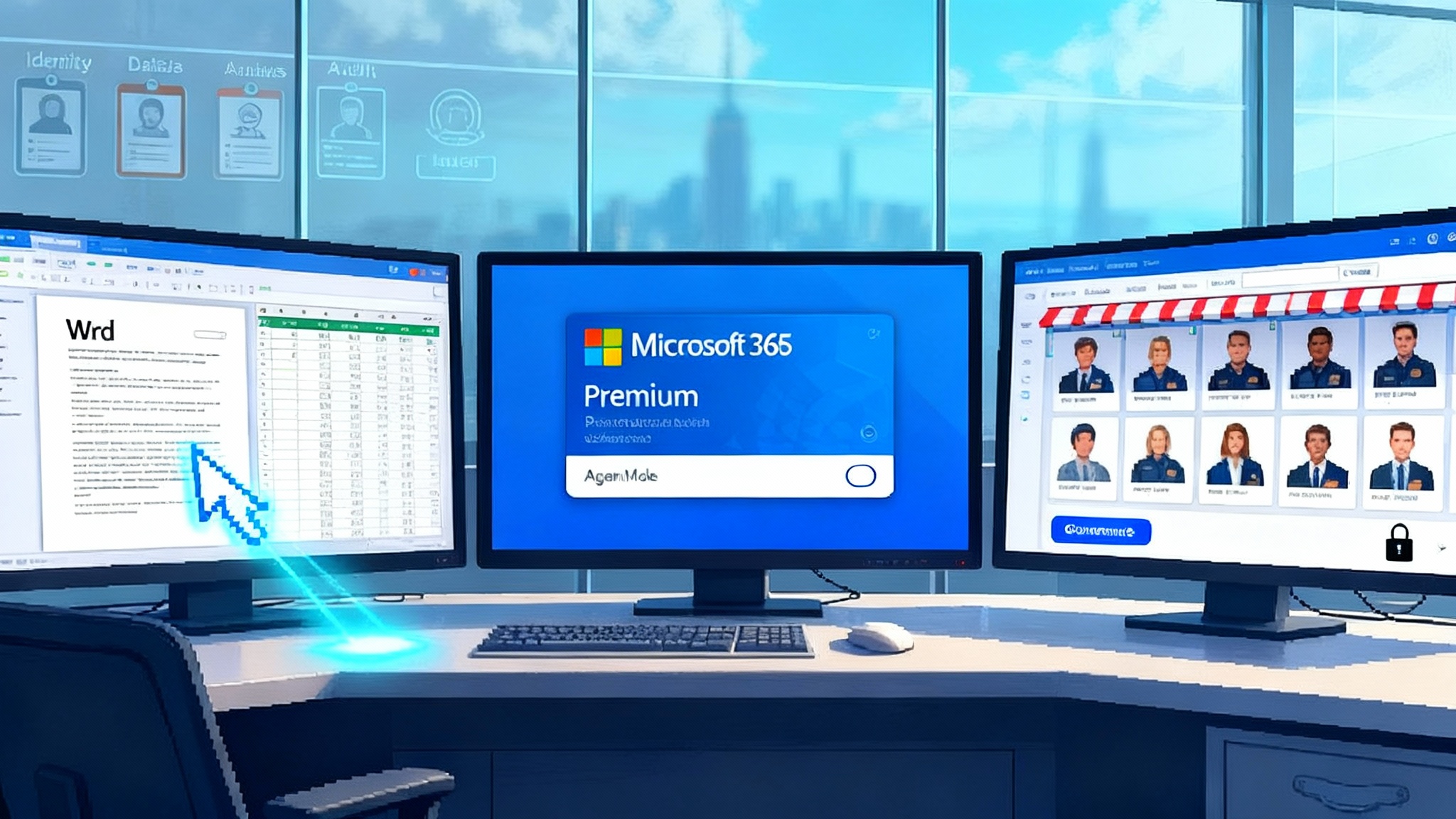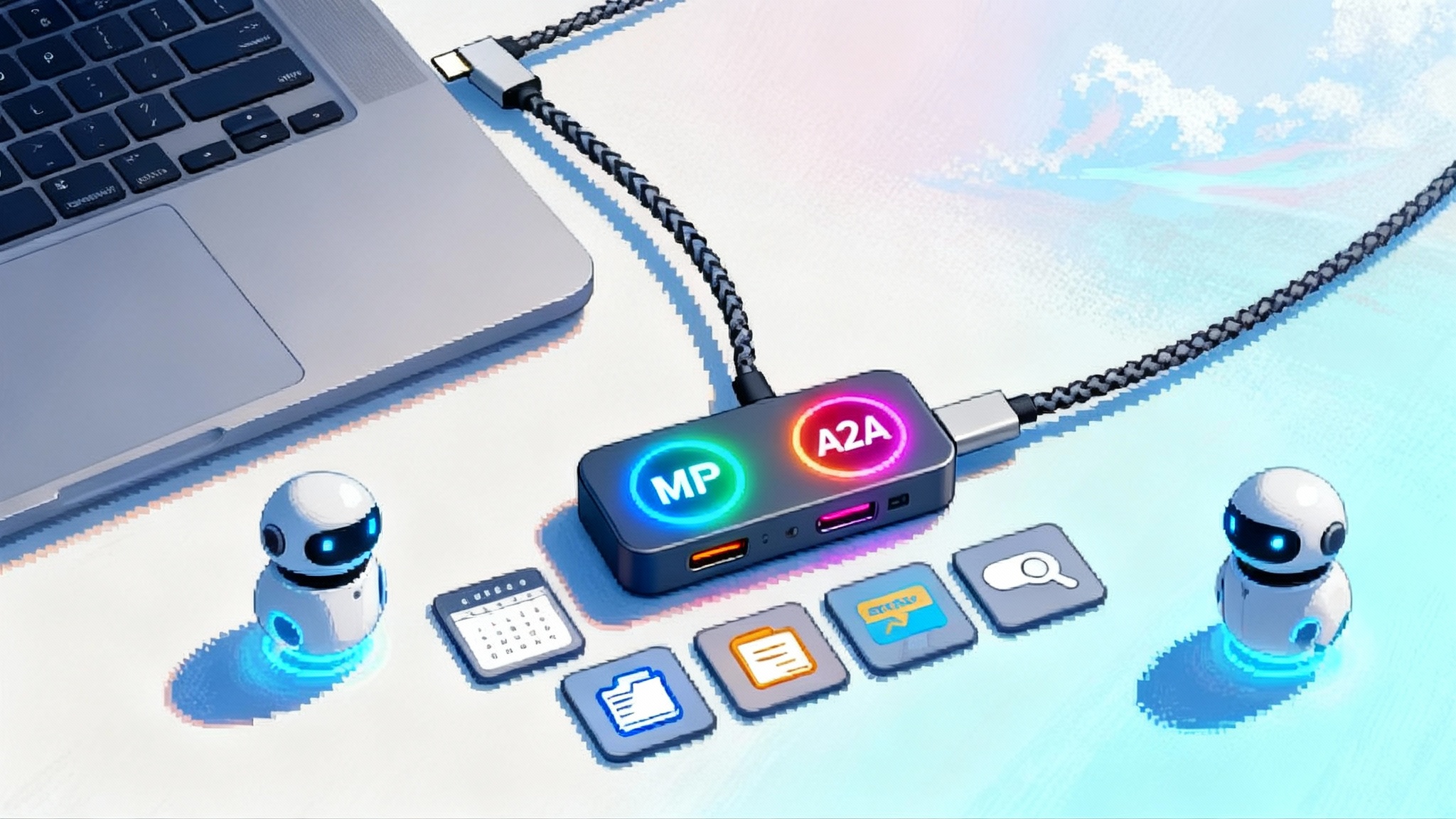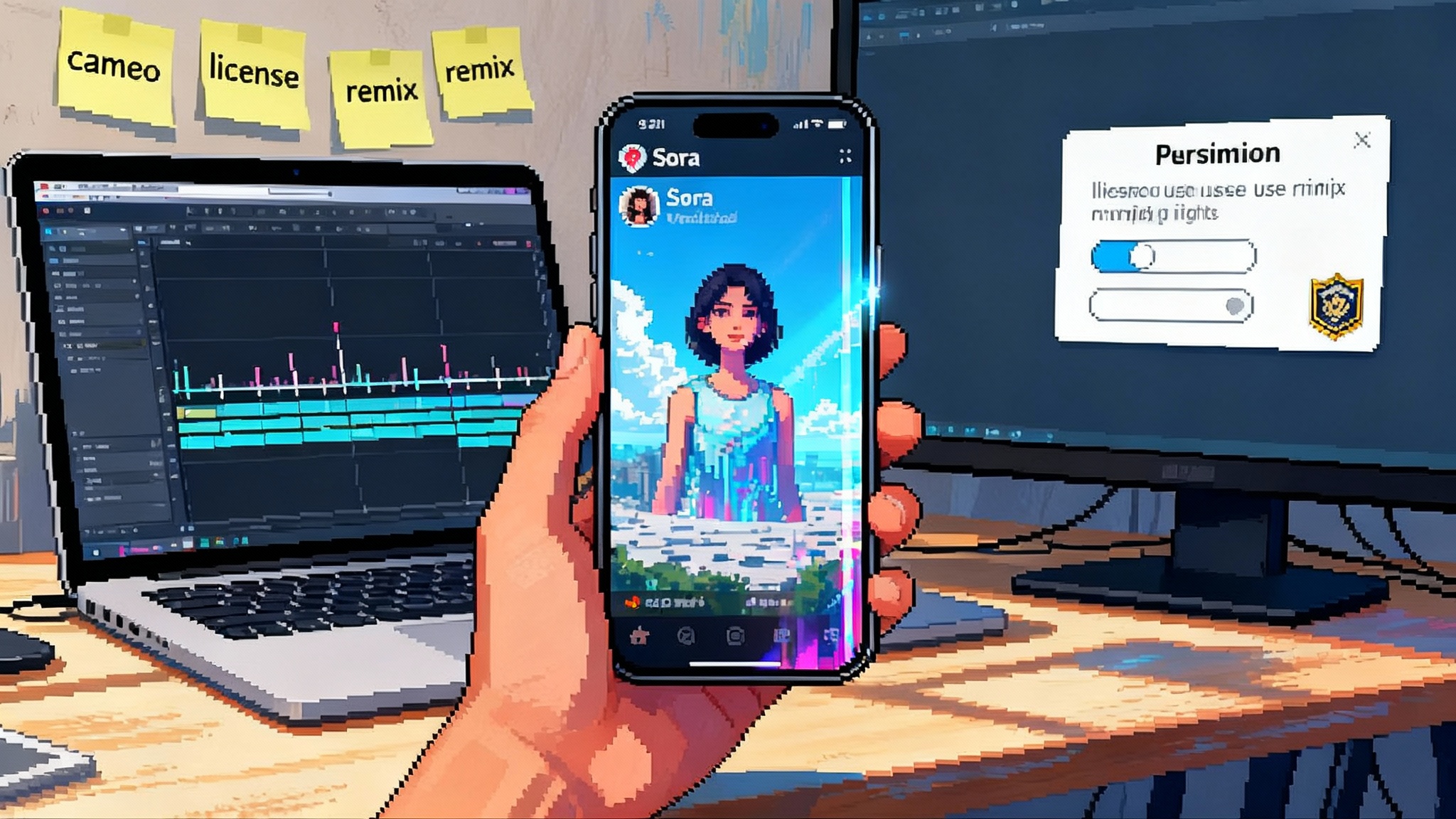Tinker Turns Fine-Tuning Into Push-Button Power For Open LLMs
A new managed training API promises one-click post-training for open-weight models. With portable LoRA adapters, built-in sampling, and RLHF or RLAIF loops, Tinker aims to turn prompt hacks into durable improvements teams can ship.

Breaking: fine-tuning goes push-button
A new player just turned a complex research ritual into a one-click workflow. Thinking Machines has released Tinker, a managed training API that hides the pain of distributed compute while keeping every algorithmic knob in reach. The company announced the product on October 1, 2025, presenting it as a flexible path to customize open-weight models without handing your destiny to a closed provider. The official announcement lays out the promise clearly: you control data and algorithms while the service handles the orchestration. Read the launch note.
This matters because the last two years taught teams to prompt their way around model quirks. That era produced clever hacks, but it also hit ceilings. Tinker signals the next phase. Instead of endlessly crafting prompts, teams can upgrade their base model itself, capturing improvements that persist across prompts, products, and teams.
From prompt engineering to push-button post-training
Prompt engineering is like giving step-by-step instructions to a brilliant temporary contractor. It works until the request changes, or the contractor takes the day off. Fine-tuning is like training your in-house hire. You invest once, the skill sticks, and future tasks benefit automatically.
Tinker reduces the cost and complexity of that investment. It packages the messy parts of modern post-training into a minimal set of primitives while keeping room for creativity. You can do classic supervised fine-tuning to teach a model your style guide or product catalog. You can set up reinforcement learning from human feedback to tighten behavior against policy. You can even explore reinforcement learning from artificial intelligence feedback when human raters are scarce.
The result is a new default. When accuracy or policy fidelity matters, teams will reach for push-button fine-tuning first, and prompts second.
What just got easier
Tinker’s design centers on four functions that map cleanly to how training actually works:
- forward_backward: compute a forward pass and backpropagate the loss, accumulating gradients
- optim_step: apply optimizer updates to your adapter weights
- sample: generate tokens for evaluation, supervision, or reinforcement learning actions
- save_state: checkpoint your work to resume or branch
You write the loop and decide the loss. Tinker makes the loop run fast across a cluster without you wrestling with node failures or tensor parallelism.
Here is what a minimal supervised loop could look like:
from tinker import Client
client = Client(model="llama-3.1-8b")
opt = client.optim(optimizer="adamw", lr=5e-5)
for step, batch in enumerate(dataloader):
loss = client.forward_backward(batch.inputs, batch.labels)
opt.optim_step()
if step % 200 == 0:
client.save_state(tag=f"ckpt-{step}")
preview = client.sample("Summarize this memo for finance:", max_tokens=120)
print(preview)
client.save_state(tag="final")
weights_path = client.export_adapters()
Under the hood, Tinker runs Low Rank Adaptation. Instead of rewriting all base weights, it trains compact adapters that slot in atop an open model. For many practical workloads this brings most of the gains of full fine-tuning at a fraction of the cost and with faster iteration.
Models you can target today
The supported catalog spans compact and large open-weight models. On the Llama side, you can move from Llama 3.2 1B for inexpensive experiments to Llama 3.1 70B Instruct for higher quality targets. On the Qwen side, you can reach dense mid-size models and very large mixture-of-experts variants like Qwen3 30B A3B and Qwen3 235B A22B. The company emphasizes that switching model families is as simple as changing a string, which means your training code becomes portable across capability tiers. See the live product page for the current roster of supported models and modes. Browse the Tinker models list.
This breadth matters for an emerging pattern. Teams will prototype with a small Llama on inexpensive hardware, prove out data and loss functions, then scale the exact same loop to a large Qwen mixture-of-experts variant for production baselines.
Why this unlocks RLHF and RLAIF
Supervised fine-tuning teaches style and substance. Reinforcement learning changes behavior. That is why reinforcement learning from human feedback became the standard for alignment and instruction following.
The trouble is the logistics. You need to sample candidate outputs from a live model, score those outputs with a reward function, and update the policy while keeping training stable and efficient. Doing this on a single machine with a single process is a toy. Doing it for a modern model across a fleet is a job for a platform.
Tinker’s primitives and managed orchestration make reinforcement learning loops doable. The sample call turns the training system into an interactive policy. You can plug a preference ranking model, human rater votes, or an artificial judge into your reward function. You can run reinforcement learning from human feedback when you have people in the loop, or reinforcement learning from artificial intelligence feedback when you want to scale judgments cheaply. Crucially, you can checkpoint and branch easily, so teams can test different reward designs side by side.
To run these loops well in production, you also need visibility into behavior. See how teams are building the control plane in our take on agent observability control plane.
What is actually new here
Three ingredients make this launch more than a convenience layer:
- Safer guardrails by default. The team states a high safety bar across its work. That includes vetting who gets access, making misuse harder, and encouraging post-deployment monitoring. In practice, that means teams experimenting with sensitive tasks can do so within a managed environment with clear escalation paths if a run misbehaves.
- Evals that fit into the loop. The sample primitive and easy checkpointing make it natural to run structured evaluations on every training step. Instead of bolting on evaluation after training ends, you can treat evaluation as part of training. That shortens feedback cycles, which is the only way to get reinforcement learning right.
- Data control with portable outputs. You keep control over your datasets and training logic, and you can export adapter weights to run on your own inference stack. This is the antidote to black-box drift. If you ever want to leave, you carry your gains with you.
The six to twelve month outlook
The implication of push-button post-training is simple. Vendor lock-in weakens. Agent verticals multiply. Here is the likely sequence.
- Quarter 1: Teams pick one or two high-value workflows that chronic prompt tweaking has not fixed. They stand up a supervised run and a small reinforcement learning loop. They ship a narrow agent that outperforms the baseline with consistent tone and policy adherence. Early wins land in customer support macros, underwriting notes, and internal documentation generation.
- Quarter 2: Reinforcement learning loops graduate from experimentation to scheduled jobs. Organizations run them weekly or nightly, using fresh feedback from tickets, chats, and internal reviewers. Models are continuously tuned to the company’s latest guidelines, not last quarter’s.
- Quarter 3 and 4: Procurement asks whether they still need the most expensive closed model tiers for every task. Cost models show that a tuned open-weight model plus reliable guardrails covers 60 to 80 percent of workloads. The remaining 20 to 40 percent stay on closed models for cutting-edge reasoning or specialized multimodal features. The mix shifts, and so does pricing power across the industry. For a broader view on this transition, see how the agent economy now is taking shape.
Agent markets follow. Vertical agents with live post-training pipelines will break out in areas with abundant feedback signals:
- Customer operations: intent routing, deflection, and compliant responses learned from real tickets
- Sales development: messaging tuned to product catalogs, territories, and brand style
- Financial services: underwriting rationales that reflect firm policy and regulator guidance
- Healthcare operations: coding and prior authorization letters with institution-specific rules
- Developer productivity: code assistants trained on house style, approved dependencies, and ticket history
- Compliance and risk: policy interpretation that evolves with new internal memos
The common theme is feedback density. Where you can harvest thousands of high-quality judgments per week, reinforcement learning will compound improvements faster than prompt libraries evolve.
Build vs. buy: how to decide now
There are three realistic paths for enterprises.
- Buy a managed post-training platform and bring your data
- When to choose: You want fast wins without building an infrastructure team. Your workloads need customization, but you do not need exotic research features or on-premise control from day one.
- What to do: Start with a small Llama or Qwen run to validate your datasets and loss design. Export adapters and verify you can run inference on your existing stack. Negotiate for a clear data processing addendum and weight export rights.
- Why it works: You get the benefit of distributed training and failure handling while your team focuses on reward design, evaluations, and data quality.
- Build on a cloud training stack
- When to choose: You have strict data residency constraints or deep platform skills, and you plan to train weekly at scale.
- What to do: Assemble a stack with a job scheduler, a parameter server if needed, a logging and checkpointing layer, and a reliable inference gateway for sampling during reinforcement learning. Budget time for kernel mismatches and driver issues. Plan for a model garden that standardizes weights and tokenizer handling across families.
- Why it works: You control every layer and can bend the system to unusual requirements, but you pay the time cost now and the maintenance cost forever.
- Stay with closed APIs and use prompt plus tool orchestration
- When to choose: You lack curatable training data or cannot accept any training run risk. You need cutting-edge reasoning that still lives only in proprietary models.
- What to do: Double down on high-quality evaluation suites and prompt libraries. Use a retrieval layer for context. Pilot a small supervised run on a safe dataset to keep the door open for later.
- Why it works: You get top-tier capability without training complexity, but your control over behavior and cost is limited. For the integration layer, watch how MCP and A2A go mainstream.
A simple way to decide is to score three axes on a 1 to 5 scale and multiply them: feedback volume, policy sensitivity, and cost pressure. If the product of those scores is above 40, start post-training now. If it is between 20 and 40, run a narrow pilot. If it is below 20, focus on evaluation quality and retrieval while you gather data.
The practical playbook for week one
- Inventory your data. List the top three sources of trustworthy feedback or labels you already collect. Examples include customer tickets with satisfaction scores, code review comments, and policy adjudication notes.
- Pick a base model tier. Start with a small Llama 3.2 1B to iterate cheaply. Plan to retarget the same loop to Llama 3.1 70B or Qwen3 30B A3B when the loss curve and evaluation suite look healthy.
- Define a minimal evaluation set. Twenty to fifty tasks that represent your week. Include red team prompts that check safety and compliance. Run this eval after every hundred training steps.
- Choose a reward design. For supervised learning runs, define a simple loss and a style metric. For reinforcement learning, decide whether you will have human raters, an internal preference model, or an artificial judge. Start simple and iterate.
- Wire the loop. Use the four primitives to implement your training code path. Add a checkpoint every few hundred steps and record sample generations so humans can spot regressions quickly.
- Dry run the exit. Export your adapter weights and serve them on your inference stack to prove you can switch providers later.
Pricing, portability, and control
According to the company, Tinker is free to start and will move to usage-based pricing, which means the barrier to entry is low but you should plan for cost governance as runs grow. The ability to export weights changes the usual lock-in dynamic. In the classic closed model world, improvements live behind an application programming interface and vanish the day you switch providers. With adapter export, improvements travel with you.
The question you must ask is not only what a model can do today, but how fast it improves at your company. Post-training is the mechanism that compounds those improvements, and portability is the mechanism that preserves them.
What to watch next
- Bigger mixture-of-experts support. Large mixtures like Qwen3 235B A22B will keep pushing throughput and routing strategies. Expect better utilization and more flexible expert routing over the next quarters.
- Richer evaluation libraries. Today, most teams assemble evaluation suites by hand. Managed platforms have a chance to make evaluation first class, with curated task packs and guardrail probes that slot into any loop.
- Live policy enforcement. Integrations that let you codify policy updates once and have them affect both generation and training runs will become table stakes in regulated industries.
- Organizational change. As training becomes accessible, owners move from platform teams to product teams. It mirrors the shift from central data science to embedded analytics a decade ago. Expect training literacy to spread well beyond research.
The bottom line
The first wave of modern artificial intelligence products taught us to speak to models with increasingly careful prompts. The next wave will teach models to speak our language. Tinker makes that shift practical by giving teams push-button access to sustained, portable improvements on top of open weights.
If your product feels one prompt away from perfect, it is time to own the improvement loop. Start small, wire an evaluation set you trust, and run the loop until your model learns your world. Whether you buy or build, the winners of the next year will be those who turn feedback into durable capability, not those who collect another folder of clever prompts.








